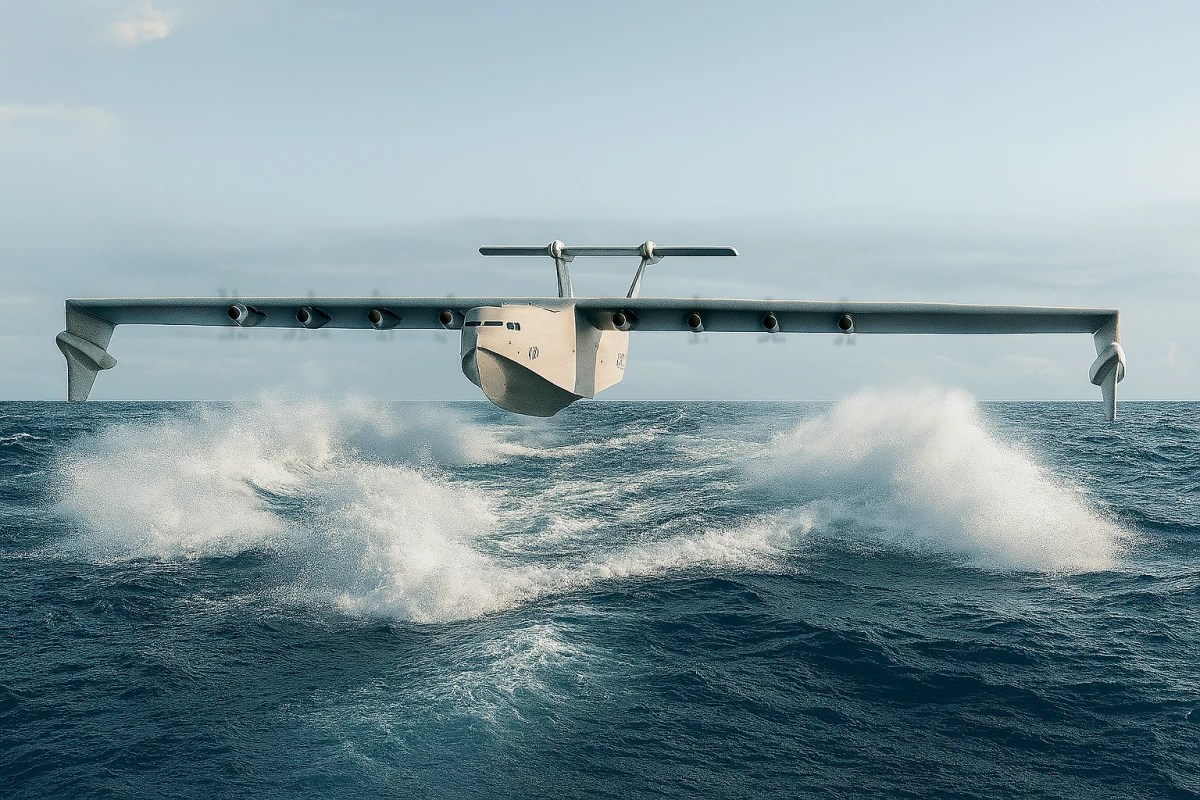If you've been hoping for a long-range, low-cost, heavy-lift seaplane using Wing-In-Ground effect (WIG), you'll have to be patient because DARPA has confirmed that it has cancelled its US$98-million Liberty Lifter project.
A sad fact about technical innovation is that the path to success is strewn with failures, dead ends, cancellations, and sheer bad luck. For every aircraft that goes into production, there are many more that don't get off the drawing board, much less reach the prototype stage.
We've been following the Liberty Lifter project for some time for obvious reasons. It may look like a throwback giant prop-driven seaplane taking its inspiration from Howard Hughes's legendary Spruce Goose, but its purpose was actually one of remarkable ambition.
The idea was to build a seaplane using advanced composite materials that had enough range and payload capacity to carry out fast logistics missions as well as assisting in rescue and disaster relief efforts. Using the WIG effect that greatly increases lift at low altitudes by essentially trapping a cushion of air under the wings, the goal was to create a series of seaplanes of unprecedented cargo capacity.
Contracted to General Atomics Aeronautical Systems (GA-ASI) and Boeing subsidiary Aurora Flight Sciences, the plan was to first build a demonstrator aircraft about the size of a C-130 Hercules capable of lifting 50,000 lb (22,600 kg), followed by an eight-engine, full-size version comparable in payload to a Boeing C-17 Globemaster III, which has a capacity of 170,000 lb (77,000 kg), and with a ferry range of 12,000 nautical miles (13,809 miles, 22,224 km).
In addition to sheer size, the Liberty Lifter was meant to be able to take off and land in State 4 sea conditions (waves 1.25 to 2.5 m/4 ft 1 in to 8 ft 2 in) and handle on-water operations in State 5 (waves 2.5 to 4 m/8 ft 2 in to 13 ft 1 in). It was also supposed to be a showcase for new materials and use shipbuilding rather than aircraft manufacturing techniques to keep costs down and speed production. Producing an aircraft that doesn't require runways or shipping ports was also attractive.
According to the original brief, the first Liberty Lifter was to take to the air by no later than 2028. However, that has now been postponed to never.
DARPA is being a bit coy about the reasons for the cancellation by claiming that the development program to date had provided valuable information on the aircraft, which would help develop new technologies that would be quickly introduced into the aerospace industry. According to the agency, data from the simulation and the creation of new manufacturing techniques would be invaluable to future projects.
Translation, pull the other one, it's got bells on. It's exactly the same excuse used when the Anglo-French Concorde program was scrapped in the 1970s when the US effectively banned supersonic civilian flight and killed any hope of any orders for the faster-than-sound airliner. Yes, it's dead in the water and cost several times more than an Apollo Moon mission, but what we learned justified the expense. Hardly. Given the budget-conscious nature of the current US government, it's more likely that there were other, more proximate factors, behind the cancellation and DARPA is trying to put on a brave face.
Source: DARPA





